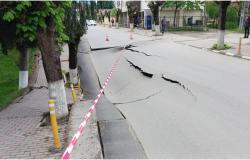Domestic electricity producers have had a difficult start to spring, in just 3 days they had to pay suppliers to take over their excess energy for 6 hours, a fifth of the total number of hours with negative prices recorded last year. At this rate, the record set in 2023 will be shattered by the end of this month.
After on Sunday, in no less than 4 hourly intervals, negative prices were recorded on the day-ahead market (PZU) operated by OPCOM, and on Monday and Tuesday there were one hour each in which the producers had to pay the suppliers to take them over the energy.
Profit.ro announced that the energy spot market in Romania (on which almost 40% of domestically consumed energy is traded) last year recorded a record number of 32 hours with negative electricity prices, in which producers practically they paid suppliers to take over their energy.
The figure in Romania was, however, a low one, at the EU level being recorded no less than 6,470 hours with negative prices, an increase of more than 10 times the number of hours with such prices from 2022.
Very likely, Romania will register this year a situation similar to the one in Europe last year, when over 400 hours with negative energy prices were recorded in some states and the phenomenon known in specialized literature as ” cannibalizing producers”.
The price paid by producers in these hours is not high, 0.05 lei/MWh on Mondays, in the interval 14-15, and 0.01 lei/MWh on Tuesdays in the same interval, but there are still 3 hours in each of those 2 days in which the price received by the producers for the delivered energy is practically 0 (0.01 lei/MWh).
The average price of the last few days is not one that producers are satisfied with either, at around 160 lei/MWh, 260 lei or 60% below the new regulated price of 400 lei at which producers sell energy to suppliers without being overtaxed.
Negative prices are mainly, but not only, the result of the integration of an increasing percentage of renewable energy production sources into national systems.
At first glance, they appear to be favorable to end consumers and their suppliers, but in reality, they are a sign of market volatility, characterized by periods of “overproduction” (when the weather is friendly: plenty of sun and wind) and periods of ” “shortage” of energy (when the more expensive sources of energy production are put into operation and imports are resorted to).
In fact, it seems that the entire regulatory framework that the government has adopted is to the advantage of the producers, majority owned by the state. Moreover, the Minister of Energy, Sebastian Burduja openly admits that, in his opinion, “at this moment, imposing a selling price on producers below the price of 400 lei/MWh would be proof of irresponsibility”.
And the new Contracts for Difference (CfD) that the government wants to introduce, which guarantees producers (especially of renewable energy) a fixed price for 15 years has the same objective, supporting the completion of announced investments in renewable capacity. However, although he claims that he will pay the possible differences with European money, this is taxpayers’ money, including Romanians, and the auctioned price of 91 euros/MWh is above the market price.
In addition, the incentives to adjust demand to supply, represented by prices, are destroyed, by which consumers (household and industrial) are cleansed to consume in the intervals where production (especially of renewables) is high.

The problem is that the whole of Europe is promoting, through various measures, the increase of renewable capacities, which will lead to an increase in the “cannibalization of producers”.
Moreover, the negative prices in Romania in recent days are the effect of the high production of renewable electricity in northwestern Europe, especially Germany.
This is how it happens that although the level of domestic production at those times was low, of approximately 4,500 MW, Romania imported energy at negative prices from Hungary and re-exported it to Bulgaria.
The Euphemia algorithm, according to which the coupling of the spot markets in Europe works, determined the reduction of the energy delivered by domestic producers.
Tags: Tough days energy producers total number hours negative prices year days
-







